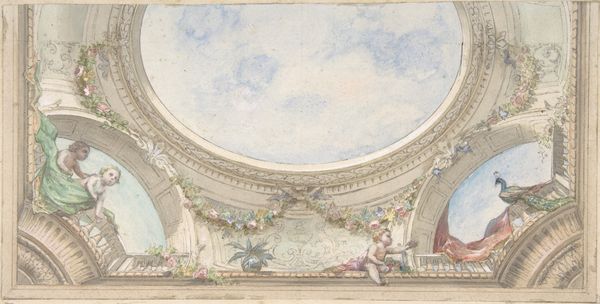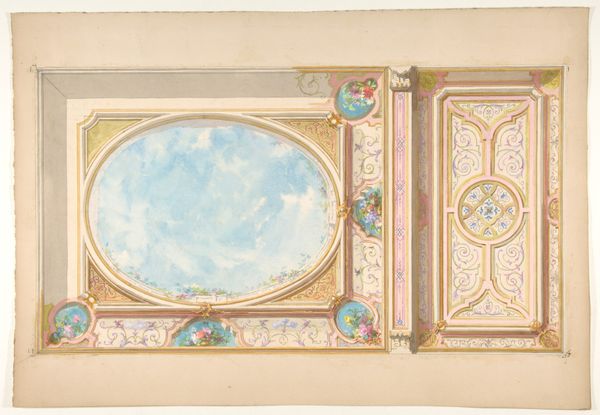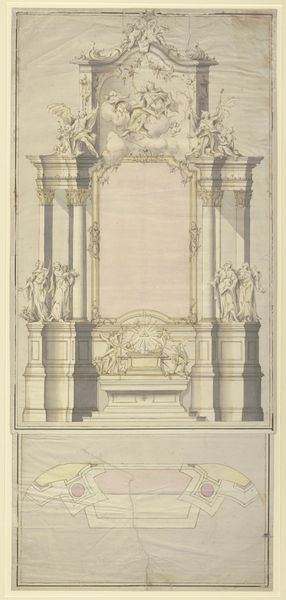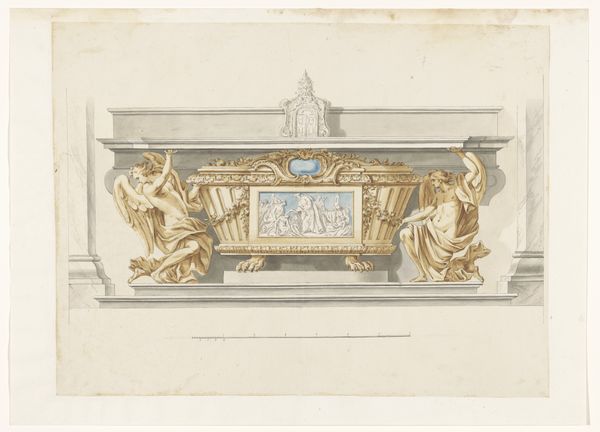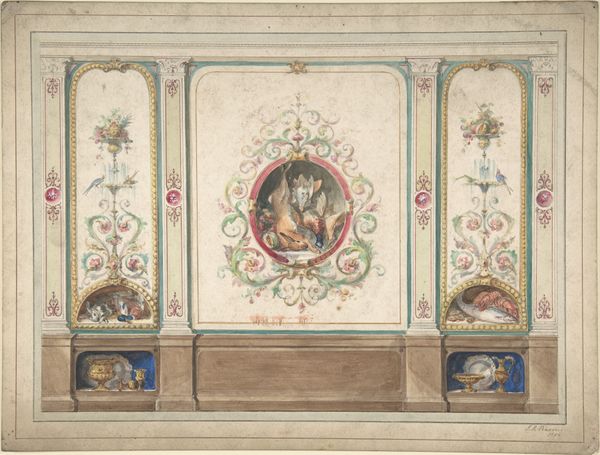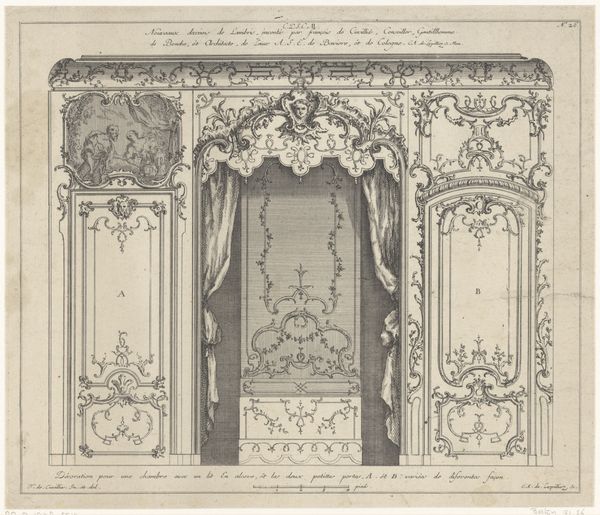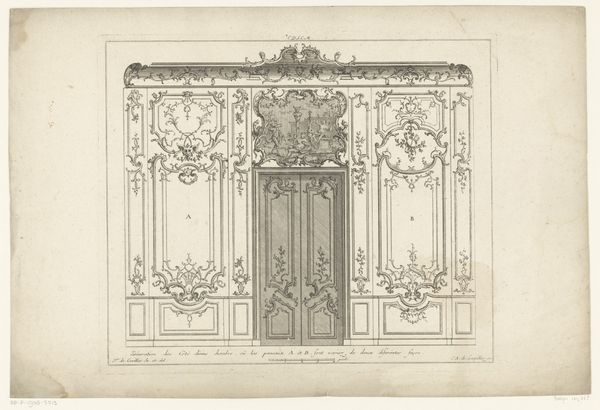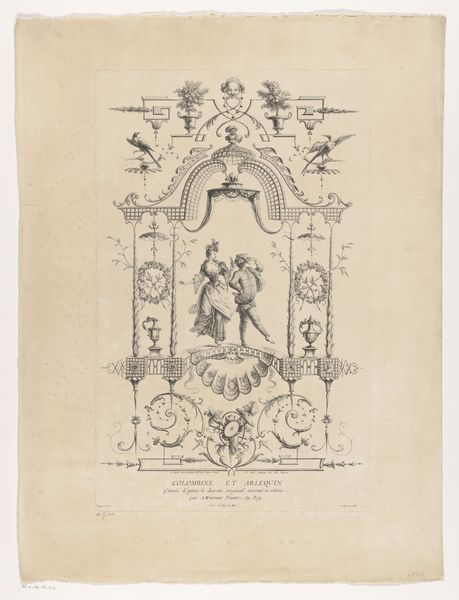
Design for Hôtel de Trevise, Paris 1850 - 1900
0:00
0:00
drawing, print, architecture
#
drawing
#
neoclassicism
# print
#
charcoal drawing
#
arch
#
cityscape
#
academic-art
#
watercolor
#
architecture
Dimensions: 6 7/8 x 16 15/16 in. (17.5 x 43.1 cm)
Copyright: Public Domain
Editor: So, here we have Jules-Edmond-Charles Lachaise's "Design for Hôtel de Trevise, Paris," dating from around 1850 to 1900. It looks like a drawing or print, perhaps using charcoal and watercolor to depict an arched doorway or window frame. The level of detail is really striking! What's your take on this? Curator: Well, let’s consider this "design" less as a precious aesthetic object, and more as evidence of specific labor and the material conditions of its production. What kind of skills and training would be required to produce such a detailed rendering? And for what purpose? Editor: Presumably, someone would use this to guide the actual construction and decoration, right? So, it's not just art for art's sake. Curator: Exactly. It is art as a direct instrument of the building trade, reflecting hierarchies of skill and value. Note the use of watercolor: relatively inexpensive and easily transportable. What does that choice of medium suggest about its intended use and the economic realities surrounding its creation? Editor: So, the watercolor allows for a more efficient design process, potentially saving the atelier money in the long run, while maximizing the time they can invest in future endeavors. Fascinating. But doesn't the subject – the elaborate hotel design itself – also point to issues of consumption and class? Curator: Precisely. This is a design *for* an élite space. The floral ornamentation, the suggestion of sculpture—all this indicates considerable expenditure and conspicuous display. Consider who would commission such a design and what their values might have been. Editor: It brings the means of its production sharply into view. It definitely provides a fresh lens through which to view Neoclassical architecture. Curator: Indeed, understanding the material circumstances surrounding this design provides a much richer appreciation of the culture from which it came.
Comments
No comments
Be the first to comment and join the conversation on the ultimate creative platform.
